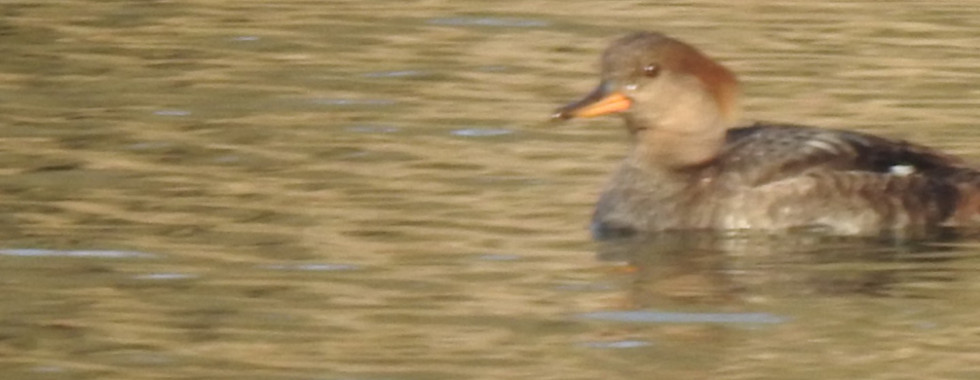Noticed and photographed this spring for the first time at Carillon Stonegate Pond. I happened to gaze out on the pond and saw a duck glistening in the morning sun and periodically disappearing under the pond's surface, only to reappear moments later.
This duck is a female Hooded Merganser. She has an elegant and distinctive cinnamon crest, which can be raised and lowered. Her male counterpart is starkly different with large, oblong black head and ornate or even flamboyant crest with a large white patch on the crest.
Their scientific name is Lophodytes Cucullatus. The genus name - Lophodytes - derives from the Greek words: lophos meaning 'crest', and dutes meaning 'diver'. The species name – Cucullatus - means hooded or having a hood.
These mergansers are among the several duck divers that visit Carillon Stonegate Pond. They will use their long, serrated bills to snag small fish. And, similar to cormorants, their legs are located far back on their bodies - good for swimming, not so good for walking on land. And with short wings, the not so aerodynamically designed Hooded Merganser will be seen running across the water's surface prior to taking to flight.
More like some birds, the Hooded Merganser nests in tree cavities - and located upwards of fifty (50) feet above ground. This is a long drop for their new born, but nature apparently has planned this out so it works! We are located on the southern end of their breeding territory which extends up into southern Canada.
Hooded Mergansers dive in our ponds and locate prey by sight - their eyes are specially adapted to seeing underwater. With lobes on their toes, they propel themselves through the water and use their slender, serrated bills to grasp their prey. They dine on small fish, aquatic insects, crayfish and other crustaceans, amphibians, vegetation, and mollusks.
Hooded Mergansers are late fall migrants - sometimes just ahead of winter. In spring, they arrive early at breeding grounds just after the ice has melt.
We are very fortunate to have a variety of wetland, forest and prairie environments conducive to a variety of birds and other wildlife, plants and insects at Carillon Stonegate Ponds. This natural environment is well suited for the birds and wildlife.
Take a hike and see what you can find – and identify!








Comments